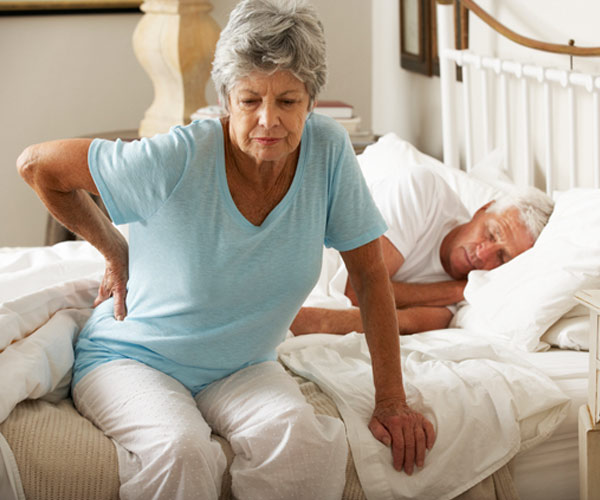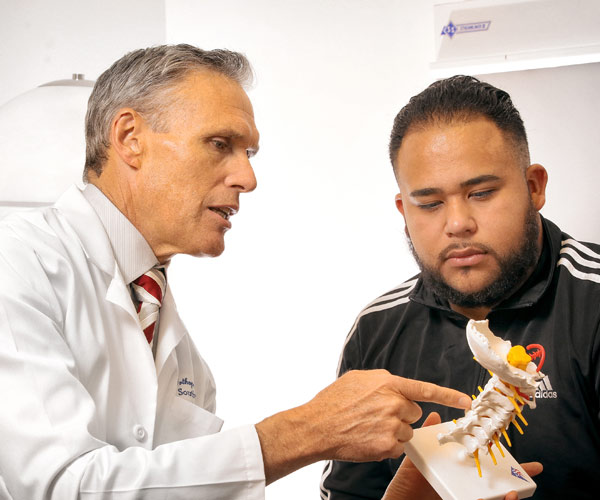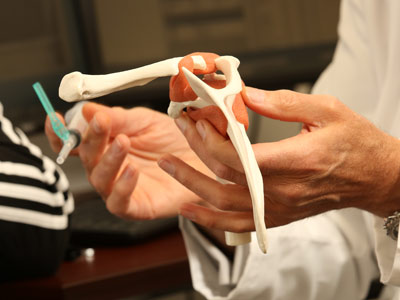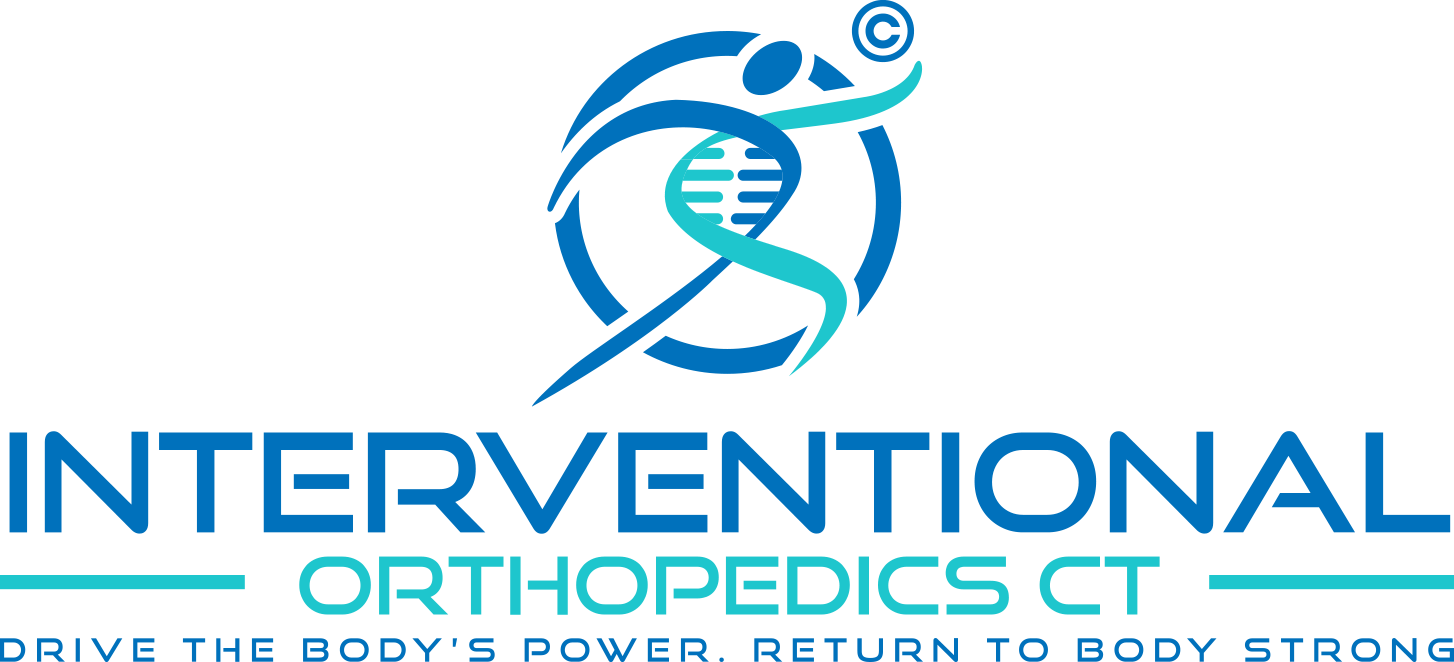Discogenic Back Pain

About Discogenic Back Pain
Discogenic back pain is pain that originates from one or more damaged vertebral discs and is most often due to degenerative disc disease or a herniated or “slipped disc” in the back region of your spine. Not all degenerated discs cause pain. Disc degeneration occurs naturally with age and is not necessarily a painful process. Discogenic pain usually begins with a disc injury that fails to heal properly over time. This results in a highly sensitive disc that causes pain when pressure is applied to it. This is ironic as healthy discs are designed to cushion large loads in the lumbar and cervical spine and normally handle great pressure applied to them without symptoms.
Symptoms of Discogenic Back Pain
Patients with discogenic back pain, as a rule, are intolerant of sitting. Symptoms of pressure, discomfort, and a dull, deep, aching pain in the midline of the body radiating into the tailbone prevent patients from sitting longer than 5-10 minutes. These symptoms are generally reduced when standing, with activity, and certainly with lying down. Pain is increased when coughing or sneezing and patients learn that they have to brace themselves when doing so to lessen the pain. Pain is worse in the am and is generally better later in the day when activity is greatest.
Causes of Discogenic Back Pain
While discogenic back pain is most often due to degenerative disc disease, any type of disc injury can result in a chronic, degenerative micro-environment inside a disc. This environment is sustained by pro-inflammatory chemicals leaking from the jelly-like nucleus of the disc into the portions of the disc that have a nerve supply that can transmit pain signals to the brain. These chemicals support enzymes that degrade disc cartilage and are toxic to cells in the disc known as chondrocytes that are responsible for keeping disc cartilage healthy. Injury to the disc results from any sudden loading of the disc especially when the supportive musculature is unprepared for such a load. This occurs with poor lifting habits, heavy contact sports including football, hockey, and rugby, accidents including car accidents, falls and with repetitive bending or lifting activities. Even lighter loads can injure a disc especially if combined with a twisting motion of the trunk. Being out of shape or fatigued can increase the risk of these injuries but even highly trained athletes may suffer disc injury if the load is great enough.
Non Surgical Treatment for Discogenic Back Pain
The main goals are to provide pain relief and improved mobility and range of motion. Typical non surgical treatment for discogenic pain includes exercise and changing activities to avoid prolonged sitting. Getting stronger in the middle, neck, and shoulders can provide support to painful discs and help by reducing the load placed on them. A dedicated stretching program can also help to reduce stress on painful discs. Chiropractic treatment, traction, and acupuncture can relieve symptoms for short periods of time. Oral anti-inflammatory and pain medications can help facilitate participation in painful activities but when used on a daily basis carry significant health risks.
To learn more and get help for discogenic back pain please Schedule an Appointment with Regenerative Orthopedic & Sports Medicine Specialist Daniel Southern, M.D. in Danbury or Wilton in Fairfield County Connecticut by calling 203-456-5717.


Surgical Treatment for Discogenic Back Pain
Patients who are simply unable to function because of the pain or who are frustrated with their activity limitations may consider spinal fusion surgery or artificial disc replacement. Spinal fusion surgery is designed to reduce the pain because it stops the motion at a painful motion segment. Unfortunately, this results in loss of motion at the fused segment which can result over time in breakdown of disc levels above and below the fusion level. This may require additional surgery to extend the fusion. Artificial disc replacement works to replace the disc, instead of fusing the disc space together, and maintain more of the normal motion in the spine, thereby reducing the chance that adjacent levels of the spine will break down due to increased stress. Recovery time and rehabilitation from surgical treatment of discogenic back pain can be lengthy and uncomfortable requiring careful pain management.
To learn more and get help for discogenic back pain please Schedule an Appointment with Regenerative Orthopedic & Sports Medicine Specialist Daniel Southern, M.D. in Danbury or Wilton in Fairfield County Connecticut by calling 203-456-5717.
Regenerative Orthopedic Medicine Treatment for Discogenic Back Pain
Regenerative procedures provide non-surgical treatment options for those suffering from pain related to osteoarthritis, joint injuries, spine pain, overuse conditions, and common sports injuries. These medical procedures are performed by highly-skilled doctors and are used to help reduce pain and improve function. They may help improve your quality of life, return to the activities you enjoy, and avoid the need for surgery or joint replacement*.
*DISCLAIMER: Like all medical procedures, regenerative procedures have a success and failure rate. Patient reviews and testimonials on this site should not be interpreted as a statement on the effectiveness of our treatments for anyone else.

